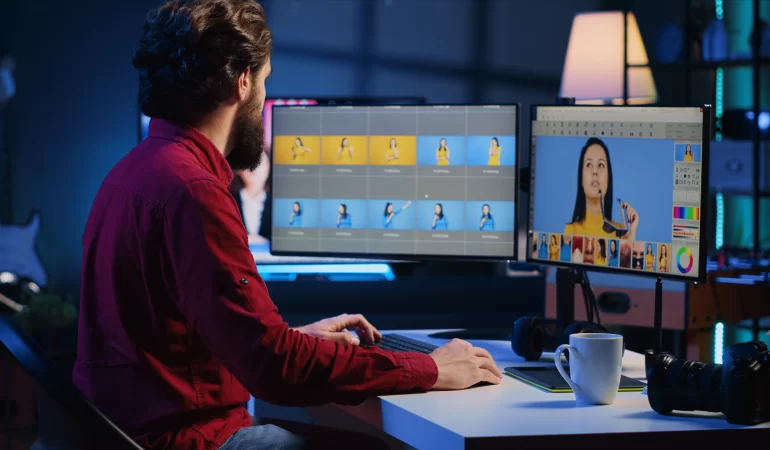Decoding eLearning #2: Understanding Animation Production to Elevate eLearning Experiences

Decoding eLearning #2: Understanding Animation Production to Elevate eLearning Experiences eLearning Experiences
In the dynamic world of eLearning, strategic animation production has emerged as a powerful tool for enhancing learning experiences. Animated content not only captures learners’ attention but also facilitates better understanding and retention of information. In this blog, we will delve into key considerations before and during the course development process to ensure the effective use of animation in eLearning.
The Pre-Animation Stage
⦿ Navigating the styles
Once the storyboard is finalized, the next crucial step is determining the appropriate animation styles. Whether it’s basic animations for foundational concepts, advanced animations for in-depth understanding, or scenario-based animations for practical application, this decision shapes the overall learning experience.
Consider options such as 2D animation for its simplicity and versatility, 3D animation for its realism, infographics for presenting complex data in a visually appealing manner, and motion graphics for dynamic visual storytelling. Each style offers unique advantages, and choosing the right one depends on the educational objectives, complexity of the subject and target audience.
⦿ Budget and Timeline Considerations
Before diving into animation, careful planning is a must. The kind of animation – basic, advanced, or scenario-based – depends on your budget and time frame. If funds are tight, sticking to basic animations keeps costs down. With more resources, you can explore advanced and engaging options. It’s crucial to be mindful of time constraints to align the animation type with project deadlines. Finding a balance between creativity and practicality, along with regular planning check-ins, ensures you make the most of your resources during animation production.
⦿ Understanding Content and Branding Guidelines
During the pre-animation phase, thoroughly review all the content to ensure a comprehensive understanding of the subject matter. Additionally, adhere to branding guidelines to maintain consistency, which may include colours, fonts, and other visual elements aligned with the overall brand image.
The Development Stage
⦿ After the animation stage, it’s crucial to communicate the content and branding guidelines, styles, and other pertinent details with the development team. This ensures coherence and consistency throughout the project. Once these guidelines are clear, the team can proceed with the development. Instead of investing significant time and resources in creating an entire course upfront, it’s advisable to consider developing a proof of concept. A concise 1-minute preview enables stakeholders to evaluate the approach, ensuring alignment with expectations before full-scale production commences. This strategy minimizes the risk of potential mismatches and optimizes development time.
In conclusion, strategic animation is integral in enhancing eLearning by capturing attention and promoting understanding. Careful planning in the pre-animation stage, considering levels, budget, and branding, sets the foundation. The development stage emphasizes deep content understanding, consistent branding, and the use of a proof of concept to align with objectives. By navigating these key considerations, you can streamline the content development process.
Leave A Comment